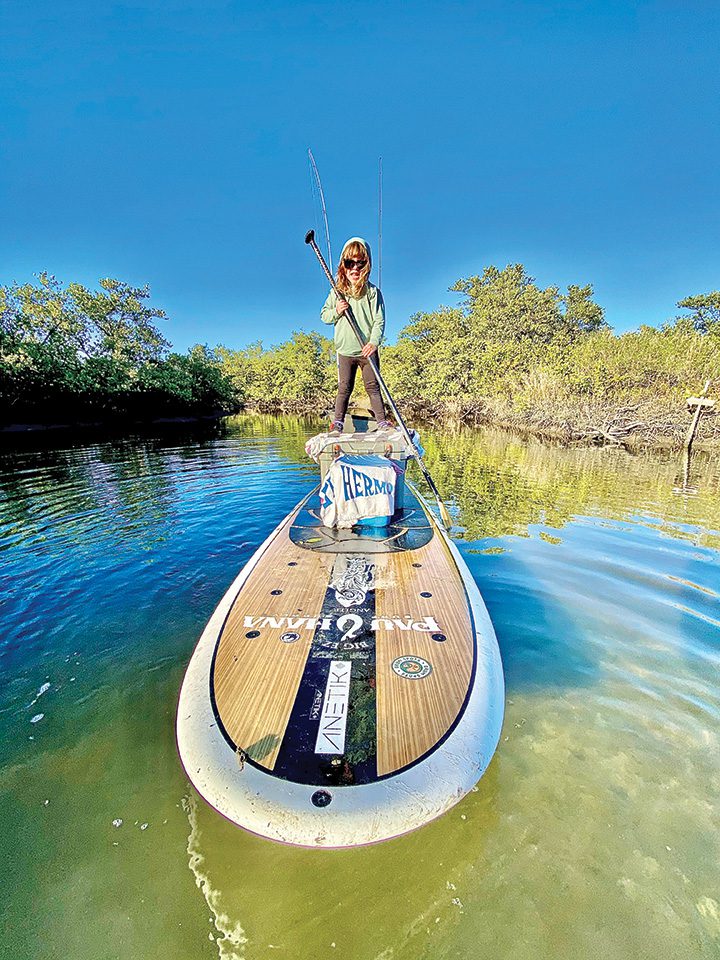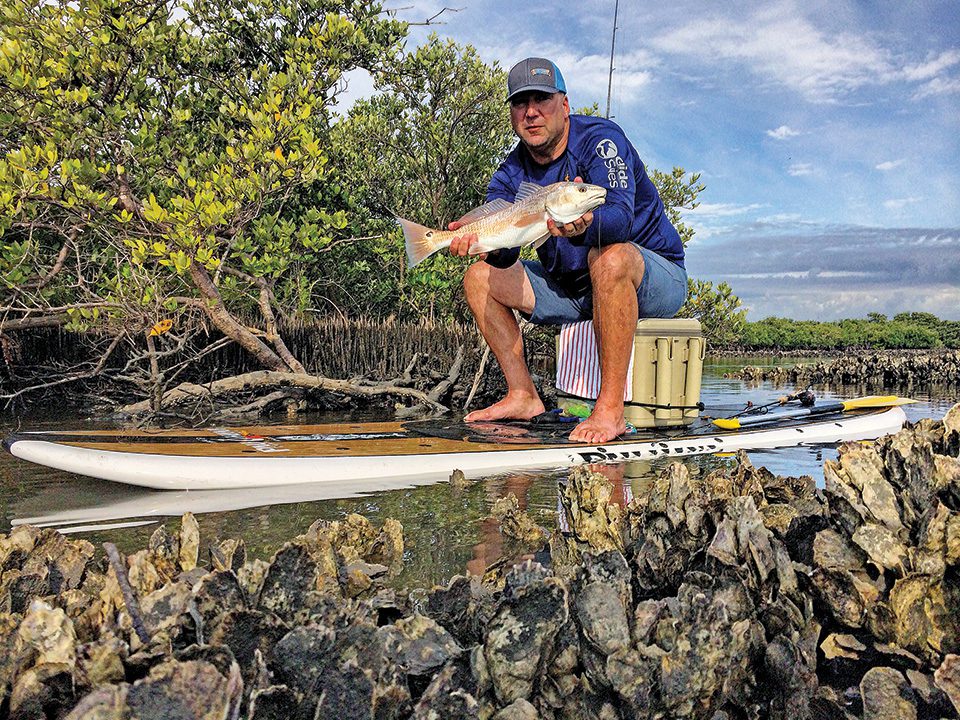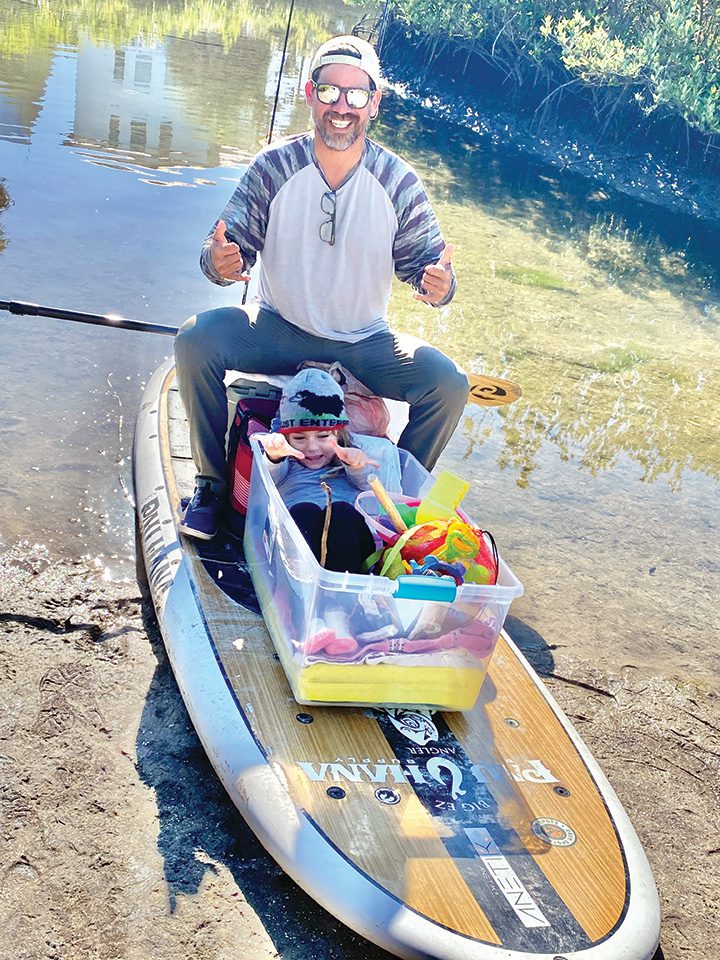By Nick Carter
Patrick “Tupat” Eichstaedt has been mucking around in backwater creeks as long as he can remember. He grew up just north of Florida’s famous Mosquito Lagoon, in Bethune Beach, where the Indian River is a labyrinth of saltwater creeks and channels that snake between mangrove islands.
Tupat is a surfer, angler and an entrepreneur, and recently life brought him home to Bethune Beach, where his passion for fishing from a standup paddleboard (SUP) re-ignited in a big way.
“The things a board allows me to see and do is incomparable to being in a boat,” he said. “It puts me as close to Mother Nature and the fish as I can get. I can get to places you wouldn’t dream of in a boat, and the stealth lets me observe fish at a much deeper level.”
Casting from an SUP for big snook, trout and redfish is not, however, something you just pick up and go do well. It’s a melding of sports, and Tupat’s surfing background gifted him with an awareness of how a board handles in the water. Anyone can spend the day SUP fishing and catch some fish. Getting good at it requires time on the water to learn the intricacies of the sport.
Here are some tips from Tupat:
Setup: Fishing from an SUP requires confidence in the board and competence on it. Before you hit the water, it’s wise to research and find a stable board that will float your weight.
From there: “You’ve got to develop a core balance and become one with the motions of paddling and fishing and how the board reacts to your movements,” said Tupat.
He fishes an 11-foot-long, 36-inch-wide, 5-inch-thick Pau Hana Big EZ Angler. He said it’s stable, yet maneuverable, and called it the ultimate fishing board.
Rigging is a matter of preference, but generally “less is more on a paddleboard,” said Tupat. A cooler placed on the middle of the board is a seat and fishbox. Aft of that, a milk crate with zip-tied sections of PVC pipe serves as a rod holder and carry-all. Tupat keeps a soft-sided, rectangular wet/dry bag in front of him on the deck. This is where he keeps tackle, tools and anything he’ll need quick access to.
“I’ve tried attachments and all that crap, and all it’s done is get in my way,” he said. “I need it to be as simple as possible to put me in the best position to catch fish.”
Stealth: The ability to sneak up on fish in shallow water is the primary advantage of a paddleboard. A paddle or any other gear banging on the deck alerts fish to your presence. Tupat said knowing where your paddle is and having a secure place to put it quickly is imperative. You should have a plan for your paddle. Tupat sets his on that soft-sided wet/dry bag, where it is secure and will not bang on the deck.
Think Ahead: Unless your board is staked out or tied off, it is going to move. It blows with the wind and drifts with the tide. Even small fish will tow a board during a fight.
Tupat constantly considers these factors and comes up with a plan before making a cast. Sometimes, finding wind-shade in the lee of landscape is necessary to fish. Other times, the wind or tide can be used to set up drifts.
When you do hook up, you must adapt to the situation.
“It’s spur of the moment to decide what you have to do to land the fish.” Tupat said. “You have to use your common sense.”
If you’re in open water, it’s possible to play a fish out. The board serves as a secondary drag system in this situation. In shallow water and tight confines, it sometimes makes sense to step off the board and battle a fish on foot. In other situations, it can be necessary to hold the rod in one hand and paddle with the other to find a more advantageous place to land large fish.
Check out Tupat’s Hawaiian Poke Sauce at www.tupats.com, his Youtube fishing show Tupat’s Fishing Adventures and his Instagram feeds @therealtupat and @tupatshawaiian.





